Electronic bill of lading is not a newly introduced technology in the shipping industry. But most peoples are not aware of Electronic bills of lading. Firstly EbL has introduced by Bolero in 1990 as a project. But it was not spread around the world due to some barriers to the technological adoption of the shipping industry.
Last decade after the covid 19 pandemic season electronic bill of lading became very famous in the industry. With the digitalization of the industry matters electronic bill of lading was introduced to the import and export industry. Major shipping lines trying to adapt the electronic bill of lading for their shipping documentation process. last few years e bL adaption has increased it becomes a new trend in the shipping industry.
Here going to identify the electronic bill of ladings, its benefits, and barriers to adopting this technology.
Statistics said that around 11 billion tons of cargo moving by sea around the world per year. So they need a huge amount of paper for the document process. It is very costly and harmful to the environment.
- Bill of lading paper usage
- Shipping lines issue approximately 45mn bl per year
- If moving to the electronic bill of lading can save $6.5 billion in direct costs for stakeholders
- Security-illegal trade reduce 10-15%globally
Because of this reason need to cut huge amounts of trees. To avoid this environmental issue, international trade now moves on to the electronic bill of lading.
Before talking about electronic bills of lading, I would like to introduce whether other names of electronic bills of lading.
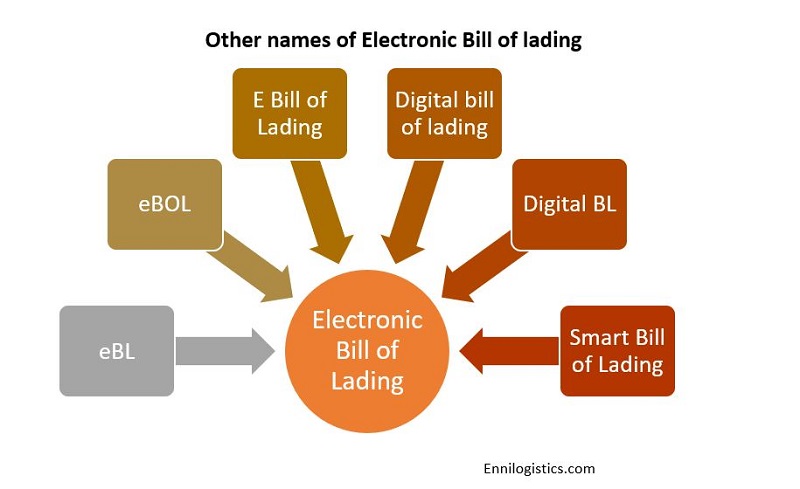
Electronic Bill of lading commonly known as the below names,
- eBOL
- E bill of lading
- E B/L
- digital bill of lading
Next, we will identify what an electronic bill of lading is.
What is eBL or Electronic bill of lading?
An electronic bill of lading is a digital form of bill of lading. In other words, we can say it is an electronic version of a traditional bill of lading. For further understanding about a bill of lading, you can read the post of a bill of lading. and also there are many types of bill of ladings.
Functions of electronic bill of lading

Electronic bill of lading also perform the same functions as the traditional bill of lading, They as below,
1. Evidence of a contract of carriage
B/L is providing evidence of the contract
Evidence of oral agreement between shipper and carrier
- Get empty containers
- Shipping instructions
- Freight chargers
- Collecting bill of lading
- Booking has already been made by the shipper
- Shipping instructions has given by a shipper
- Empty containers need to collect by a shipper that is provided by the carrier
2. Receipt for the cargo
B/L is showing details of cargo quantity and condition of the cargo. It acts as a receipt of the cargo. Therefore consignee/buyer can demand the goods that are mentioned in B/L according to the right condition and right quantity when the cargo has loaded onto a ship.
Hague-Visby rules say that B/L provides two types of evidence as a receipt of cargo.
Prima facie evidence -for the shipper
Conclusive evidence – for the third party
3. Document of title
B/L functions as a document of title. It means the legal right (the title) of the cargo can be passed from one party to another party by the endorsement of the B/L. We can simply say cargo ownership can be transferred from one party to another by B/L endorsement.
The meaning of endorsement is a written document on the original bill of lading in the consignee’s name, with the endorsement can transfer the right of shipment to another party.
The carrier is liable to release cargo at the destination port to the right owner of the B/L mentioned which is duly endorsed original B/L.
But eBL has improved the speed of the generating and sharing, security, and accuracy of the data ad information.
For example, we can say e BL is a traditional or physical bill of lading that needs more time to create and share among stakeholders. It is costly and time-consuming.
But eBL is not much cost than traditional BL. It is fast and high security and also does not worry about loss of the document. So it has greater security while less risk of transferring EBL.
How to save money by using EBL?
Electronic Bill of Ladings can be saved money of 4 billion per year.
How to create and use EBL?
The shipper is liable to provide all the information and date to the carrier for the purpose of generating a Bill of lading. Then it is very easy to share electronically generated bill of lading among freight forwards, consignees, banks, and other parties involves in the shipment process.
This process reduces the cost of administrative and also the operational costs of all the parties involved in the shipment process.
Benefits of electronic Bill of lading
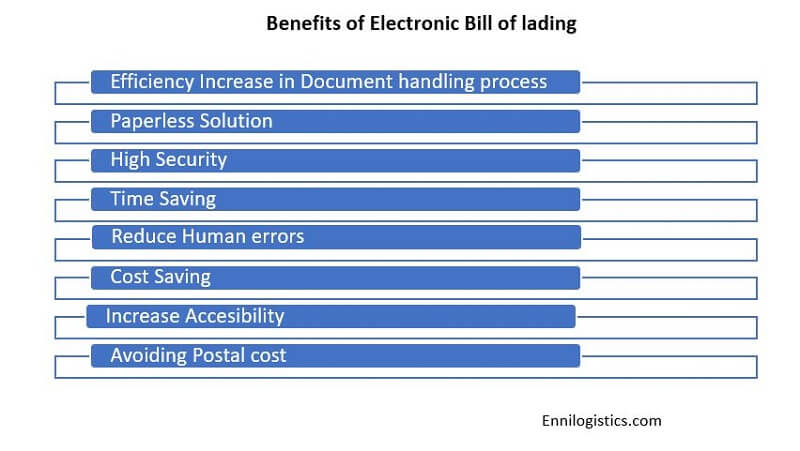
There are more benefits to electronic bills of lading.
- Efficiency increase – generating an electronic bill of lading in a few minutes. so no need to complete it manually. It also saves money.
- Paperless solution– data entry was done digitally, and also there is an electronic signature and electronic stamp. So shipment information and cargo ownership can be transferred to another party easily and quickly.
- Security-document loss risk eliminated and also fraud eliminated
- Reducing human errors.
- Reducing time– speed bill of lading sharing process.
- Amend, endorse, surrender, or transfer your electronic bill of lading at any time, from anywhere
Paperless environment solution: in a supply chain information and data sharing are done through software systems with integration processes such as EDI, API, or other systems such as ERP, TMS, and CRMs.
This process eliminates the manual data re-entry process. It saves money and time on administrative functions. and also it is prevent human errors when data entry manually. And also it eliminates the sharing and storing of physical documents.
Fast data and information exchanging process -amending bills of lading or drafting bill of lading is easy with the electronic bill of lading.
Increase the accessibility of the bill of lading – all the users can access data via the internet by using a web browser, smartphone, or tablet. laptops, pcs, etc. They can access the data anytime and anywhere in the world. It is also a better option in the shipping industry.
Data accuracy level is high– Whe the generation of traditional or paper bill of lading uses many sources to enter information. but electronic intergaredted systems use for collect information it reduces the risk of human errors.
Data security-for eliminating fraud.e BL is a better solution because of the high level of security.
for the generating e bl use the new technology called blockchain technology. It guarantees the accuracy of the information and confirms the right time and date for creating relevant information for all parties. Because blockchain technology works on the distribution network.
This can avoid postage costs– May you think postage cost is very low for one shipment? but you have to handle a huge number of shipments per year. So document postage costs became high. using EBL can avoid postage costs.
Electronic storage -it is easy to search for details and easy to find historical records.
The above benefits prove that electronic B/L is very important to trading in the present. But as you all know there is a low percentage of the electronic bill of ladings used in the industry. Next, we will find the reasons for low adaptations to the electronic bill of ladings.
There are many challenges have to face when moving towards the electronic version of the bill of lading.
Challenges of the electronic bill of lading?
- Adaption and understanding of the eBL
- legal complications
- verifying insurance coverages
How to e BL works?
- same as traditional or paper bill of lading,
- EBl has one holder at one time
- there must be a holder at all times
- there is a little registry record to mention who is the holder
There is doubt about shipping lines and how to use and adaption of electronic bills of lading.
Below are summarized details of Major shipping lines starting and adapting the electronic bill of lading process.
Firstly we are going to identify the process of e BL of the MSC shipping line.
MSC shipping line and Bill of Lading
- MSC started pilot projects in 2019 with WAVE BL
- Global launch in 2021
- 100%will 2030
Quick registration link for the electronic bill of lading
For more details on the MSC electronic bill of lading click here
Hapag Lloyd
Hapag Lloyd is distributing the electronic bill of lading via WAVE.
For more details about Hapag Lloyd electronic B/L , click here
Videos related to eBL,
You may like to read,
Bill of Lading: Everything you need to know
Master Bill of Lading(MBL) and House Bill of Lading(HBL): Everything you need to know
Proforma Invoice and Commercial invoice: Everything you need to know
Shipment Arrival Notice/notification


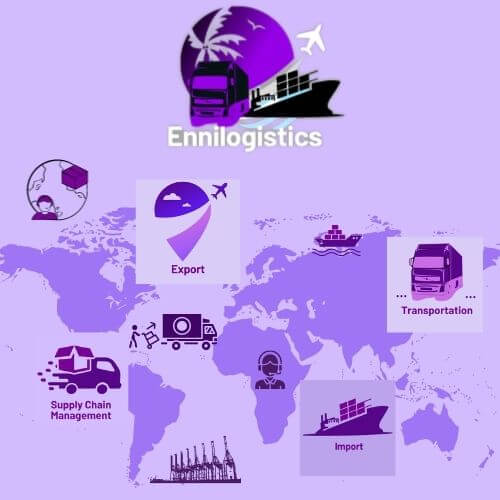


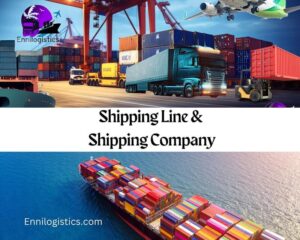
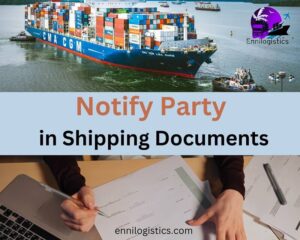
1 thought on “Is Electronic Bill of Lading (e B/L) a new trend?”
Actually, we still depend on using normal BL in suez ports. Especially for bulk cargoes.